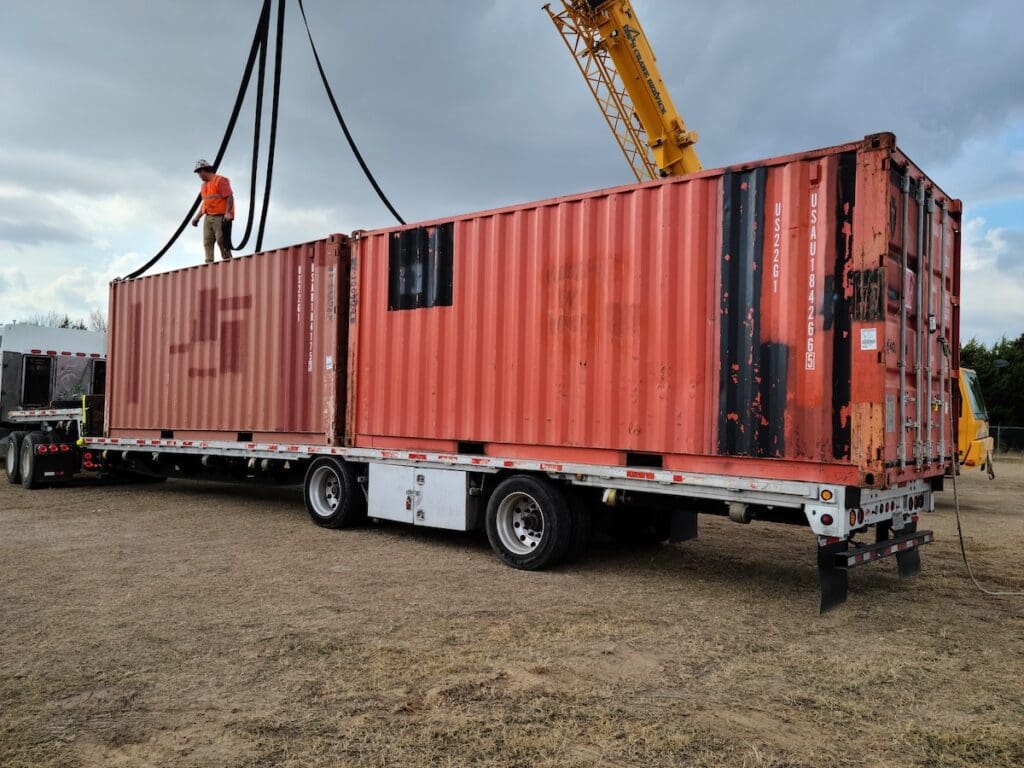Shipping across the border can be tricky, whether you’re shipping across the US-Mexico border or the US-Canada one. Knowing how to manage challenges and staying ahead of the needs of customers can be difficult to manage. Businesses are facing more challenges today than they ever have with the commonality of international shipping. However, Next Exit Logistics has solutions for international shipping for you and your business to make sure that all your shipping needs are met and your freight arrives quickly and safely.
When committing to cross-border shipping, it’s important that you have a few things sorted out right away. First, it’s important that you have accurate information about truckload limits on both sides of the border and that your freight will move swiftly with the help of customs brokers. Paperwork needs to be completed well in advance of arrival, and you need to know who you can trust to move your freight. Finally, monitoring any changes in the requirements, political situations, and any other pertinent changes are important to make sure your goods arrive safely.
Understanding Cross-Border Shipping
Cross-border shipping occurs when a company doesn’t open a new warehouse in another country but instead keeps its existing warehouse and chooses to ship orders over the border when necessary. This can happen for a number of reasons. Some benefits include:
- Expanding to new markets
- More cost-effective than setting up a new warehouse
- Minimal supply chain issues
- Easier to manage one location
- A wider range of clientele
As costs rise throughout various industries, cross-border shipping’s major benefit is combating costs. While at one time it was possible, and very common, to have multiple warehouses set up in various locations and countries, those days are behind us in many aspects. Now, it’s much more economical to have one central shipping hub and engage in cross-border shipping to move goods across the border. Particularly for businesses that are web-based, this kind of shipping mode is very popular.
Cross-border shipping also allows businesses to test their goods in different markets much more easily than traditional business models. While one market may not be interested in a certain product at all, another market may be selling this product out. This gives companies the opportunity to offer more goods but also to have a lower chance of being stuck with goods they can’t sell.
Challenges in Cross-Border Shipping
Depending on the various markets that are engaging in a company’s goods, there can be quite a few challenges to consider when opting toward offering cross-border shipping on your products. Considering all of these issues in advance, however, can make the process less complicated and allows it to progress more simply.
Customs Regulations and Procedures
Probably one of the most complicated issues with shipping cross-border is understanding the tax requirements and regulations of the different countries that your company may be shipping to. It’s important to know the correct classifications to apply to goods, as well as make sure that all fees and taxes are paid well before any deadlines.
High Costs and Taxes
Costs are constantly shifting and changing. This can present a major challenge if you’re expecting one price on taxes and shipping costs and your expectations aren’t accurate. Having an accurate picture of costs that are occurring is essential. When working with a reliable shipping company, you won’t have to worry about having an up-to-date idea of what costs will arise.
Security Concerns
Security can be a major challenge when shipping cross-border. Some border areas can be dangerous, and goods being moved across the border can be a major target for those looking to score a quick buck. However, reliable shippers will move products quickly and safely to where they need to be.
Language Barriers
Language is one of the most obvious barriers to cross-border shipping. Language barriers also come with cultural differences that need to be acknowledged as well when expanding into markets you may be unfamiliar with. Language barriers can not only affect information about products, but they can also lead to miscommunication and other issues with customer service. Frequently, people shop from businesses that feature their own native spoken language.
Infrastructure Issues
Cross-border shipping may allow businesses to expand beyond their wildest dreams; however, sometimes, businesses might not have the infrastructure in place to handle rapid expansion. It can be difficult to predict how much your business will expand and how prepared you need to be. Planning for expansion and being prepared for further expansion or potential supply chain setbacks is the best way to prepare your business’s infrastructure.
Managing Customer Expectations
Things change so quickly in the global community that it can be difficult to know what customers expect and want. Staying ahead of trends and the needs of your customers can be a significant challenge in business in general, but when you need to manage those expectations across borders, this can be even more challenging. Being sure to provide excellence in customer service and predicting the needs of customers is the best way to manage changing expectations. Also, addressing any concerns immediately as they arise helps customers remain satisfied with service.
Each of these things can affect the shipping process, as they can stand in the way of an otherwise smooth shipping operation. If you don’t address these issues quickly, it can drastically affect your business and create barriers to expansion. Rather than allowing there to be barriers in your shipping process, prepare for your expansion, and be sure to choose a shipping company that can roll with the changes in your business.
Solutions to Overcome Cross-Border Shipping Challenges
Just as there are many things to consider when embarking on shipping your goods cross-border, there are also a number of solutions to address these challenges. The first of these is to consider integrating technology into your operations if you haven’t already. Automation technology can help your warehouse operations run more smoothly.
Collaboration and partnerships can also assist your cross-border operations. Partnering with other businesses shipping to the same regions can help you cut costs and also still meet deadlines. It also helps to hold you accountable by pairing with another business that relies on you. Additionally, partnering with the best shipping companies that can understand your needs is especially important.
Communicating effectively is a vital solution to challenges that will likely arise. Open, frequent, and transparent communication does a great deal to make sure that operations function effortlessly. Being sure to communicate when there’s a setback, being proactive about any potential problems, and staying in contact with the various facets of your business will do a great deal to combat hold-ups due to communication.
Planning and risk management helps to combat supply chain problems as well as shipping problems. Assessing where there might be the most risk and allocating resources to those areas will help to alleviate problems that will certainly arise. Also, understanding that there will be both negative and positive outcomes helps prepare you and your business for the best and the worst to come. Risk management is essential to operating a business that employs cross-border shipping.
Finding Effective Solutions for Cross-Border Shipping
As with early business solutions, being proactive and planning is the best way to combat many of the challenges that come with modern business. While every business strives to expand, not every business is prepared to deal with the issues that will arise. When beginning cross-border shipping solutions for business expansion, it’s most important to recognize all the challenges that may come. However, just recognizing the potential for challenges isn’t enough. Planning for them and pairing with the right shipping company can help you combat these issues before they negatively impact your business.
By implementing effective solutions to the challenges that arise during cross-border shipping, you can alleviate a majority of the concerns that will present. This can be done with effective management, being prepared for language barriers, proactive communication, and pairing with leaders in cross-border shipping.
Next Exit Logistics: Experts in Cross-Border Shipping
Engaging with the best shipping solution providers in the industry can help alleviate any cross-border shipping challenges that may arise. Companies with a great deal of experience and resources will be able to provide innovative resolutions to your concerns. Next Exit Logistics is a leader in innovative logistics solutions, including international shipping solutions, providing excellence in not only service but also in maintaining relationships with our customers. We recognize that trust is paramount to our success, and that’s why we strive to offer you the best transportation solutions for all of your unique needs. Learn more about our shipping solutions today.
FAQs
What Are the Common Challenges Faced in Cross-Border Shipping?
Some of the common challenges in cross-border shipping include security, changes in taxes and costs, and language barriers. Other important challenges to consider include infrastructure concerns with business and customs regulations.
How Can Businesses Overcome the Obstacles in International Shipping?
While there are a number of solutions to the obstacles faced with international shipping, one of the most important things a business can do is be prepared for the issues that may arise. Having a plan or resolution for potential challenges is the best way to be proactive. Additionally, pairing with the right shipping company can help alleviate many of these challenges.
What Strategies Can Be Implemented to Improve Global Logistics Efficiency?
Employing technology can help manage warehouses through automation. Automation solves many issues by predicting challenges by collecting data and making choices based on the collected data. Additionally, being prepared to solve challenges that will arise, rather than simply going with the flow, can help businesses be ready for issues that may occur.




